This site uses only a few technical cookies necessary for its operation. By continuing to browse, you accept their use.
To find out more...
To find out more...
French baguettes
This classic of French baking is rather different from the recipe for leavened bread, it's a question of making a good crust and light crumb along the whole length. To succeed, you should know that there are two secrets: water first of all (much more than for normal bread), and the working of the dough, which is also very different.
Last modified on: October 24th 2017
For 6 baguettes, you will need:
- 1
 1 kg plain white flour (French Type 65)
1 kg plain white flour (French Type 65) - 2
 550 ml water
550 ml water - 3
 18 g salt
18 g salt - 4
 250 g leaven
250 g leaven - 5
 7 g yeast
7 g yeast - Total weight: 1,825 grams
Times for this recipe
Preparation: 45 min.
Resting: 4 hours 5 min.
Cooking: 20 min.
All in all: 5 hours 6 min.
If you start now, at , you will finish around : ?.Change start time
To finish around 7pm, you'll need to have started before: .Change end time
Step by step recipe
In bread-making, the water temperature is always important. It's not a fixed value, but related to 3 other temperatures: 1) the temperature of your flour, 2) the room temperature in your kitchen, and 3) the basic temperature of this recipe, which is 56-60°C.
You can calculate the temperature of the water for this recipe in one click, using this small calculator.
You can calculate the temperature of the water for this recipe in one click, using this small calculator.
Put in the mixer bowl 1 kg plain white flour (French Type 65) and 550 ml water.
Knead for 5 minutes at minimum speed, to well mix water and flour.
Note: For the best way to knead, see: A few tips for effective kneading at home.
Knead for 5 minutes at minimum speed, to well mix water and flour.
Note: For the best way to knead, see: A few tips for effective kneading at home.
Cover with a plastic sheet and let stay for 1 hour.
After this time, add 18 g salt, 250 g leaven and 7 g yeast.
Knead for about 10 minutes, ideally dough should be at the end of kneading at 73°F (23°C), or better try the window-pane test.
Knead for about 10 minutes, ideally dough should be at the end of kneading at 73°F (23°C), or better try the window-pane test.
Put the dough, roughly shape in ball, in a plastic container, covered with a plastic sheet, and let stay for 1h30.
...and scale pieces of 300 grams.
Note: if you plan to make half-size baguettes, you should scale 150g pieces instead.
Note: if you plan to make half-size baguettes, you should scale 150g pieces instead.
Stage 8 - ⌛ 15 min.
Shape pieces of dough in balls, like in this short video on the right.
Let stay dough lumps on your working surface for 15 minutes, covered with a plastic sheet.
Stage 10 - ⌛ 15 min.
From lumps, shape baguettes as shown in this video.
If you use baguettes moulds, put lumps directly in, cover with plastic sheets and let stay for 1 hour.
If you don't have moulds, put lumps on floured linen, then cover with plastic sheets and let stay for 1 hour.
Preheat your oven at 460°F (240°C), slash top of lumps...
...and put in the oven for about 20 minutes.
Note: As when baking any bread, you should ensure that the oven is filled with steam for the first 15 minutes of baking. This page shows you how; it really is the secret of golden-brown, crusty loaves..
Note: As when baking any bread, you should ensure that the oven is filled with steam for the first 15 minutes of baking. This page shows you how; it really is the secret of golden-brown, crusty loaves..
Remarks
You can make baguettes as for other bread: plain or with different flours, or with added seeds, grains, etc.
If you want more information about making your own bread, you can look at this dedicated page.
If you want more information about making your own bread, you can look at this dedicated page.
Keeping: For the crunchy, only a few hours, but can easily be froozen.
Source: From Thomas marie.
Nutritional information
| Proteins (gr) | Carbohydrates (gr) | Fats (gr) | Energy value (in k-calories) | Energy value (in k-joules) | |
|---|---|---|---|---|---|
| Whole recipe | 140 RDI=50 % | 1,090 RDI=100 % | 20 RDI=3 % | 3,990 RDI=200 % | 16,690 RDI: 200 % |
| Per 100 g | 7 RDI=3 % | 60 RDI=6 % | 1 RDI=0 % | 220 RDI=10 % | 920 RDI: 10 % |
| Per baguettes | 20 RDI=9 % | 180 RDI=20 % | 3 RDI=1 % | 660 RDI=30 % | 2,780 RDI: 30 % |
How much will it cost?
- For 6 baguettes : 2.15 €
- Per baguettes : 0.40 €
Change currency:
Note: Be careful, these prices are only an estimate, you can consult the table of prices by ingredients used for this estimate.
Some other recipes using this recipeSee them all 7
Mini cheese and mustard toasts
For an aperitif snack with a difference, try these little toasted slices of baguette topped with cheese and mustard. Easy to make and can be served in a jiffy.
81 K 25 min.
Smoky canapés
These tasty morsels combine the freshness of a pistachio and spinach pesto with the smoky flavours of Morteau sausage and cheese. They make original aperitif snacks or starters.
37 K 50 min.
Bouchées montagnardes
Literally "mountain mouthfuls" in French, these canapés combine ingredients from the mountainous region of eastern France: Morteau sausage, Morbier cheese and mushrooms. They make a hearty aperitif snack or are ideal for an informal supper.
36 K 30 min.
Stuffed baguette
This baguette is "stuffed", rather than merely filled: hollowed out and refilled with a tasty mix of sautéed onions, fried bacon bits and eggs, before browning in the oven. A useful way to use up a leftover baguette, even if it is already going dry. It makes a great dish that children love, and...
126 K3 55 min.
Bisto-style canapés
This recipe captures the hearty and slightly raffish style of French bistro cuisine: fried rounds of baguette with egg, fried ham and a topping of melted cheese.
47 K 40 min.
This recipe uses (among others)

Plain white flour (French Type 65)
Like these other recipes: Mustard baps, Hamburger buns, Roscoff loaf, Ali Baba bread, Cretan Bread, ... See them all 19

Water
Like these other recipes: Bacon rolls, Puff or flaky pastry (pâte feuilletée), Turnip top soup, Ali Baba bread, Bacon rolls, ... See them all 138

Leaven
You can get more informations, or check-out other recipes which use it, for example: Naan, Pogne de Romans, Ocean bread, Pizza dough, Bacon rolls, ... See them all 21

Salt
Like these other recipes: Soufflée omelette with cheese, Pissaladière with puff pastry, Crispy potato and mushroom brik rolls, Tandoori-flavoured chicken with leeks, Stuffed Mushrooms, ... See them all 677
Other recipes you may also like
Cooking sugar
Cooking sugar, which is one of the basics of patisserie and sweet-making, is a delicate operation in which sugar is heated from 100°C or 212°F to 180°C or 356°F. Here is some information on this tricky subject. [Translator's note: the terms used below correspond to the French tradition, as often used by English-speaking chefs, but there are other stages and terms in other traditions. Best to use a thermometer, and be guided by temperature, as the English terms commonly used in domestic... April 3rd 2019517 K4.9 45 min.
How to prepare corn salad
Corn salad (or lamb's lettuce) is a green salad plant. It can be used like lettuce, but requires careful preparation as it is often grown in sand. Here is how to prepare corn salad from the freshly picked plant to the leaves ready to use. April 10th 2013164 K4.1 20 min.
Country filo tart
For this recipe, we use strips of filo pastry, assembled in circles in a tart mould, which are then filled with Reblochon cheese, potatoes and cooked meat, and finally topped with a quiche filling. The resulting tart is very tasty and crisp, but also very light, since it doesn't require a conventional tart dough. February 9th 202519 K 1 hour
Clarified butter
This is a way of melting butter to eliminate all the impurities. The clarified butter can then be heated without spoiling, and is more digestible. It is ideal for cooking at high temperatures where small black specks would spoil the appearance, or for emulsified sauces like béarnaise or mousseline. June 21th 2017482 K4.2 2 hours 15 min.
How to cook Morteau sausage well
This is, in my opinion, the best smoked sausage. You can cook it in a number of ways, here are three of the best known. November 15th 20182.82 M 23.4 40 min.
News list of cooking-ez.com
Sign up to receive the latest recipes (next batch due to be sent on 2025-12-28)
Note: We'll never share your e-mail address with anyone else.
Follow this recipe (as 23 people already do)
If you are interested in this recipe, you can "follow" it, by entering your email address here. You will then receive a notification immediately each time the recipe is modified or a new comment is added. Please note that you will need to confirm this following.
Note: We'll never share your e-mail address with anyone else.
Alternatively: you can subscribe to the mailing list of cooling-ez.com , you will receive a e-mail for each new recipe published on the site.

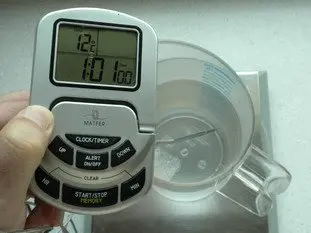
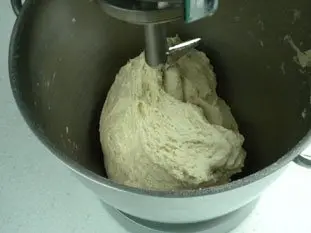
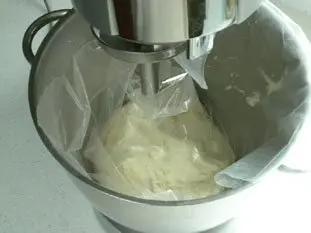
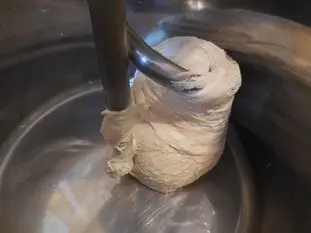
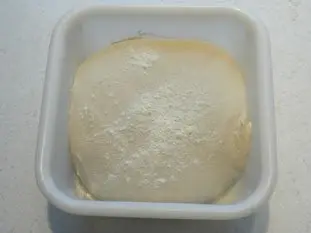
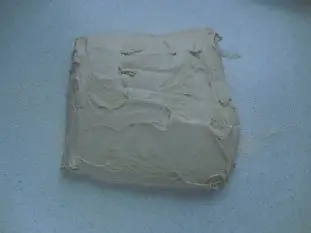
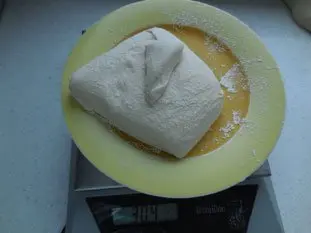

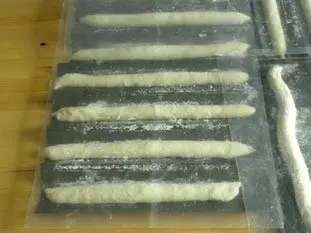

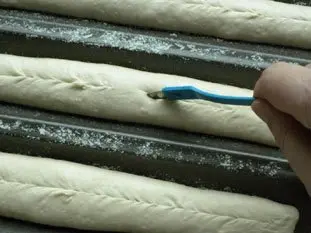


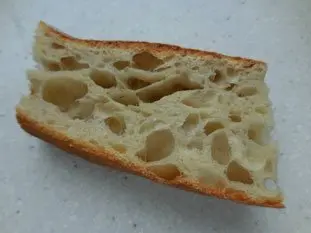





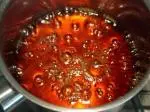




The 36 comments already posted on this recipe
That's OK too for instant yeast, but reduce weight of yeast by 25-50% in this case.
Can I use instant yeast to replace fresh yeast?
It was noisy indeed but so much fun, that's why I'd like to try making the baguette with this method :)
And thank you for the info about Respectus pannis! Very interesting. I understand that we could just leave the dough resting with very little kneading and it would turn out just fine but I'm surprised to read that this new movement really does rely on a very long resting time and a very little levain...
I just received Manitoba and T65 flours; might try both your baguette and bread with respectus pannis system this weekend. Merci bcp JH!
According to that, there is in the French bakery a new movement that is growing up, for a different way of making bread: less salt, less kneading, less yeast or leaven, but much more resting time at almost ambient temperature (16-18°C), it's called "Respectus pannis" if you want to check out.
I come with another question; instead of using a mixer/kitchen machine, can I use Bertinet's method (slap&fold) to knead the dough?
I understand that it will take longer than using a machine, but is it possible?
I will try your baguette recipe this weekend. Super excited!
It is, but please notice that's a different way that using leaven to make bread.
Keeping a part of your dough, in the fridge for one night, and using it in your daily dough (usually 10-20% of the weight of normal dough), is a way of making bread.
Using leaven in your dough (and in that case soured dough is useless) is another one, and different.
Using soured dough is easier, but less tasty than using leaven.
Have fun in bakery!
I also heard that you can keep a portion of your old dough as 'soured dough' and add it when you are making a new batch of baguette dough and this will enhance your dough.
Is that true?
If I'm using your recipe for 3 baguettes (500 gr) flour, how many soured dough should I keep/add from the previous batch?
Thank you again JH!
Yes, you can.
Can I still use it for the recipe without changing the weight measurement?
Thank you!
For this recipe you could start by a French one (50%), and see what you got?
Yes, you can add seeds (very good idea btw) , about 20% of the weight of flour. Check out this recipe for some advices: seeded loaf.
I would like to add some seeds, but how many grams and do I have to add more water?
Merci beaucoup!
The old one was coming from the web, and the new one from a great French baker who teach me.
Where the old one came from? Actually I saw a french baker in Youtube ising that method, playing the dough in a big plastic box. Is that method a traditional one?
Salut!
Sorry, no, but this one is much better and give tastier baguettes.
I was using the old version, could youpls keep it for reference? thanks!
Here's a new version of the recipe, more simple and more efficient.